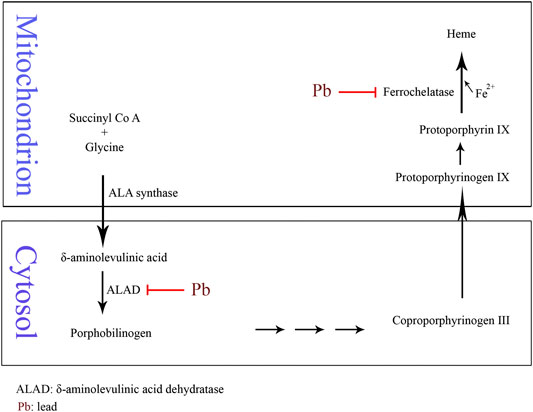Report on Heavy Metal Toxicity as a Driver of Biodiversity Crises
Executive Summary
The role of heavy metal pollution as a threat to global biodiversity, a core concern of Sustainable Development Goals (SDGs) 14 (Life Below Water) and 15 (Life on Land), remains a subject of ongoing scientific investigation. This report synthesizes the current understanding of the relationship between elevated environmental heavy metal concentrations and biological responses across marine and terrestrial ecosystems. By examining evidence from deep-time biotic crises and drawing analogies from modern environments, the analysis assesses the role of heavy metal toxicity in past mass extinction events. While some studies present evidence, such as sporomorph malformations, implicating heavy metals as primary extinction drivers, others suggest these signals are artifacts of post-extinction processes. Critical analysis reveals that methodological approaches, particularly normalization techniques and the assessment of metal bioavailability, are key factors influencing interpretation. Further research is required to clarify the role of heavy metals in Earth’s history, thereby informing current risk assessments and strategies for achieving the 2030 Agenda for Sustainable Development.
Introduction: Heavy Metal Pollution and Sustainable Development
The accumulation of heavy metals in the environment, accelerated since the Industrial Revolution, poses a significant challenge to achieving multiple Sustainable Development Goals. Heavy metals such as mercury (Hg), lead (Pb), and cadmium (Cd) threaten environmental integrity and undermine progress on:
- SDG 3 (Good Health and Well-being): Through bioaccumulation in organisms and biomagnification in food chains, these pollutants cause severe damage to tissues and organs.
- SDG 14 (Life Below Water) and SDG 15 (Life on Land): Heavy metal toxicity leads to long-term ecological disruptions, impacting entire food webs and contributing to biodiversity loss.
Historically, heavy metal loading was associated with natural geological processes like volcanism from Large Igneous Provinces (LIPs). Research suggests these past events serve as analogues for understanding the potential consequences of modern, anthropogenic pollution. Geochemical proxies, such as mercury concentrations, are used to link volcanism to mass extinctions. However, existing models often oversimplify the dynamics by neglecting the critical role of metal bioavailability and the complex interplay with other environmental stressors like climate change and anoxia, which are also central to the SDG framework.
Analysis of Heavy Metal Impacts on Ecosystems and Biodiversity
Bioaccumulation and Biomagnification: A Threat to SDGs 14 and 15
Heavy metals present a dual threat to the achievement of SDGs 14 and 15 due to their capacity for bioaccumulation and biomagnification. Organisms absorb metals to concentrations far exceeding ambient levels, and these concentrations increase at successively higher trophic levels. This process jeopardizes the health of entire ecosystems, from microorganisms to apex predators. The biological impact is further complicated by the nature of the metals:
- Bioessential Metals: Elements like copper and zinc are necessary for biological functions within a specific threshold but become toxic in excess.
- Non-Bioessential Metals: Elements like mercury and cadmium have no known biological function and are toxic even at low concentrations.
Understanding these distinctions is crucial for developing effective pollution controls that protect biodiversity and support sustainable ecosystem management.
Geochemical Assessment and Bioavailability
The environmental risk posed by heavy metals is determined by their bioavailability, not their total concentration. Metals in the environment are partitioned into different chemical fractions, each with a different potential for biological uptake. These phases include:
- Acid-soluble phase: Highly mobile and environmentally hazardous.
- Reducible phase: Released under anoxic conditions.
- Oxidizable phase: Becomes bioavailable under oxidizing conditions.
- Residual phase: Tightly bound in mineral structures and largely non-bioavailable.
Standard analytical methods in deep-time studies, which normalize mercury (Hg) against Total Organic Carbon (TOC) or sulfur (S), do not fully account for these changes in bioavailability. This limitation can lead to misinterpretations of past toxicity events. Advanced techniques like heavy metal fractionation are necessary to reconstruct bioavailability and accurately assess the ecological impacts during past environmental crises, providing a more robust scientific basis for policies related to SDG 6 (Clean Water and Sanitation) and SDG 12 (Responsible Consumption and Production).
Historical Context: Heavy Metal Toxicity in Past Environmental Crises
While mercury is widely studied as a proxy for volcanism, the role of other toxic metals like arsenic (As), lead (Pb), and cadmium (Cd) is less understood. Elevated concentrations of these metals in sedimentary records are often linked to changes in organic carbon content or the development of euxinic (anoxic and sulfide-rich) conditions. This creates ambiguity as to whether heavy metals were a direct cause of extinction or a byproduct of other environmental stressors. Two case studies from the Permian-Triassic Mass Extinction (PTME) highlight these challenges.
Case Study 1: Siliciclastic Environments (Festningen, Svalbard)
At this location, previously identified mercury enrichments disappear when normalized to sulfur content. This suggests that the mercury was sequestered as non-bioavailable mercury sulfides under anoxic conditions, which themselves would have been a primary threat to marine life. In contrast, arsenic and lead remained elevated after normalization, implying a potential increase in bioavailable toxic metals during the extinction interval. This underscores the need for multi-proxy normalization to distinguish true pollution signals from geochemical artifacts.
Case Study 2: Carbonate Environments (Çürük Dağ, Türkiye)
This site shows low concentrations of lead and cadmium but enriched levels of arsenic and mercury compared to the Festningen section. However, this discrepancy is likely due to the different lithologies and lower baseline concentrations of aluminum and sulfur at Çürük Dağ. This highlights a critical methodological challenge: comparisons across different geological settings can be misleading without standardized approaches like enrichment factors, which are still evolving. Reliable data interpretation is essential for applying lessons from the past to modern environmental management.
Biological Responses and Implications for Life Below Water (SDG 14)
Morphological Malformations as Indicators of Environmental Stress
In modern ecosystems, heavy metal pollution is known to cause morphological malformations in marine organisms, such as bivalves, gastropods, and benthic foraminifera. These abnormalities, which are preserved in the fossil record, serve as direct evidence of biological stress during past extinction events. Malformations have been recorded in foraminifera, ammonites, and conodonts across major crises like the end-Cretaceous and end-Permian extinctions. However, because multiple environmental factors can cause such changes, directly linking them to heavy metal toxicity in deep-time requires integrated analysis with geochemical data on metal bioavailability.
Broader Ecological Responses
Beyond malformations, heavy metal toxicity can drive structural changes in marine communities, favoring tolerant species and impacting organisms at higher trophic levels through biomagnification. Investigating compositional shifts in fossil assemblages alongside bioavailability data offers a promising avenue for quantifying the role of metal pollution in past biodiversity loss. Such studies can provide a long-term perspective on ecosystem resilience, informing conservation strategies aimed at protecting marine biodiversity as mandated by SDG 14.
Biological Responses and Implications for Life on Land (SDG 15)
Impacts on Terrestrial Flora
Heavy metal pollution severely impacts terrestrial plants, a cornerstone of SDG 15. Toxic metals induce oxidative stress by generating reactive oxygen species (ROS), which damage cellular structures and disrupt critical physiological processes like photosynthesis and nutrient uptake. This leads to stunted growth, reduced biomass, and compromised reproduction. Non-bioessential metals like mercury and cadmium are particularly harmful, as they can mimic essential nutrients and interfere with metabolic pathways, leading to genetic mutations and cell death.
Evidence from the Fossil Record
Direct evidence of such stress in the geological past comes from teratology (malformations) in fossilized pollen and spores. Widespread abnormalities in sporomorphs have been documented during the end-Permian, end-Triassic, and Toarcian extinction events. These malformations coincide with significant mercury anomalies linked to large-scale volcanic activity. This correlation strongly suggests that volcanogenic heavy metal pollution was a key factor driving mutagenesis and ecosystem collapse on land. These findings highlight the vulnerability of terrestrial ecosystems to atmospheric pollution and reinforce the importance of controlling emissions to protect life on land.
Conclusion and Future Directions for Sustainable Development
The hypothesis that heavy metal toxicity was a major driver of past mass extinctions remains a critical area of research with direct relevance to contemporary environmental challenges and the Sustainable Development Goals. This report highlights the complexities in identifying and interpreting heavy metal enrichments, emphasizing that robust conclusions require assessing bioavailability and using appropriate normalization methods.
To advance our understanding and better inform strategies for achieving the 2030 Agenda, future research must address several key questions:
- Can heavy metal fractionation provide new insights into the bioavailability of metals during past extinctions?
- Were heavy metals bioavailable at concentrations sufficient to cause toxic effects and contribute to mass extinctions?
- Are morphological malformations in marine and terrestrial fossils definitively linked to metal toxicity or other environmental stressors?
- Was toxic heavy metal pollution a recurring phenomenon throughout the Phanerozoic, or is it primarily a modern threat?
Addressing these questions will be essential for disentangling the complex dynamics of Earth’s history and applying those lessons to present-day environmental challenges. By integrating geological and biological data, we can gain invaluable insights into the risks of heavy metal pollution and strengthen our efforts to protect biodiversity and ensure a sustainable future.
Analysis of Sustainable Development Goals in the Article
1. Which SDGs are addressed or connected to the issues highlighted in the article?
The article on heavy metal pollution and its impact on biodiversity addresses several Sustainable Development Goals (SDGs) by highlighting the widespread environmental and ecological consequences of contamination from hazardous substances.
-
SDG 3: Good Health and Well-being
The article connects to SDG 3 by discussing the inherent toxicity of heavy metals. It states that metals like mercury (Hg), lead (Pb), and cadmium (Cd) have “detrimental effects on ecosystems” and their “toxic effects lead to severe damage to body tissues and organs.” While the primary focus is on ecosystems, the underlying theme of toxicity and its hazards is directly relevant to human health, which is a key component of this goal.
-
SDG 6: Clean Water and Sanitation
This goal is relevant as the article describes how heavy metals contaminate water bodies. It mentions that heavy metals “settle or wash out of the atmosphere into oceans, streams, and land.” The discussion on heavy metal concentrations in marine and aquatic environments and their impact on water quality directly relates to the objective of ensuring clean water for all.
-
SDG 12: Responsible Consumption and Production
The article links heavy metal pollution to human activities, stating that “Human activity has been loading the environment with heavy metals since Roman times” and that the “Industrial Revolution marked a critical turning point.” This historical context of pollution from industrial and other human-driven activities aligns with SDG 12’s focus on managing chemicals and wastes responsibly to minimize their adverse impacts on the environment.
-
SDG 14: Life Below Water
SDG 14 is a central theme of the article. The text extensively reviews the impact of heavy metal pollution on “marine ecosystems,” detailing processes like bioaccumulation and biomagnification which “pose severe risks.” It discusses how heavy metal toxicity affects marine organisms, from “nannoplankton” to “mussels,” and can lead to “widespread extinctions,” directly addressing the goal of conserving and sustainably using marine resources.
-
SDG 15: Life on Land
This goal is also strongly connected, as the article analyzes the effects of heavy metal pollution on “terrestrial ecosystems.” It highlights how metal toxicity has been linked to “past mass extinctions and biodiversity crises” on land. The discussion of “malformed sporomorph” and the “collapse of terrestrial ecosystems” due to heavy metal poisoning directly pertains to the protection and restoration of terrestrial biodiversity.
2. What specific targets under those SDGs can be identified based on the article’s content?
Based on the issues discussed, several specific SDG targets can be identified:
-
Target 3.9: By 2030, substantially reduce the number of deaths and illnesses from hazardous chemicals and air, water and soil pollution and contamination.
The article’s entire premise is built on the “hazards of heavy metal contamination” and their “toxic effects.” By investigating the mechanisms of toxicity, bioaccumulation, and the historical impact of pollutants like lead, mercury, and cadmium, the research contributes to the knowledge base needed to understand and ultimately reduce the health risks associated with such hazardous chemicals.
-
Target 6.3: By 2030, improve water quality by reducing pollution, eliminating dumping and minimizing release of hazardous chemicals and materials.
The article discusses how heavy metals are released into the environment and “wash out of the atmosphere into oceans, streams, and land.” This directly relates to the goal of reducing water pollution caused by hazardous chemicals. The research on identifying sources (volcanic, anthropogenic) and measuring concentrations of these metals is fundamental to achieving this target.
-
Target 12.4: By 2020, achieve the environmentally sound management of chemicals and all wastes throughout their life cycle… and significantly reduce their release to air, water and soil to minimize their adverse impacts on human health and the environment.
The article’s discussion of heavy metal emissions from “human-driven activities” since the Industrial Revolution speaks directly to this target. It examines the consequences of releasing these chemicals into the environment, underscoring the need for their sound management to prevent ecological crises.
-
Target 14.1: By 2025, prevent and significantly reduce marine pollution of all kinds, in particular from land-based activities, including marine debris and nutrient pollution.
The article provides a detailed analysis of heavy metal pollution in “marine ecosystems.” It describes how these metals enter the oceans and cause harm through “bioaccumulation and biomagnification.” The case studies on marine organisms and the mention of “anthropogenically induced heavy metal pollution” directly support the objective of reducing marine pollution.
-
Target 15.5: Take urgent and significant action to reduce the degradation of natural habitats, halt the loss of biodiversity and, by 2020, protect and prevent the extinction of threatened species.
This is a core focus of the article. The central hypothesis tested is whether “heavy metal loading of the environment during past mass extinctions and biodiversity crises reached toxic thresholds, potentially contributing to species loss.” The discussion on the “collapse of terrestrial ecosystems” and the link between metal toxicity and “widespread extinctions” directly aligns with the urgency of halting biodiversity loss.
3. Are there any indicators mentioned or implied in the article that can be used to measure progress towards the identified targets?
Yes, the article mentions and implies several indicators that can be used to measure environmental stress and progress towards the identified targets:
-
Concentration of Heavy Metals in the Environment
The most direct indicator is the measurement of “elevated environmental heavy metal concentrations.” The article frequently refers to measuring the concentrations of specific metals like Mercury (Hg), Lead (Pb), Cadmium (Cd), and Arsenic (As) in sediments and water. It also discusses various normalization methods (e.g., Hg/TOC, Hg/S) to ensure accurate measurement, which is crucial for monitoring pollution levels (relevant to Targets 6.3, 12.4, 14.1).
-
Morphological Malformations in Organisms
The article proposes using biological responses as direct indicators of toxic stress. It highlights that “morphological abnormalities in marine organisms” and “malformed sporomorph” in terrestrial plants are preserved in the fossil record and can be linked to heavy metal pollution. These malformations serve as a powerful bio-indicator of ecosystem health and contamination levels (relevant to Targets 14.1, 15.5).
-
Foraminiferal Abnormality Index (FAI)
The article explicitly mentions a quantitative indicator used in modern studies: the “Foraminiferal Abnormality Index (FAI).” This index measures the percentage of malformed foraminifera in a community to assess pollution levels in marine environments. The text notes that in “heavily polluted areas,” up to “23% of communities showing malformations” have been recorded, making the FAI a concrete tool for monitoring marine pollution (relevant to Target 14.1).
-
Bioavailability and Fractionation of Heavy Metals
The article implies that simply measuring total metal concentration is insufficient. It emphasizes the importance of assessing “metal bioavailability as a key factor influencing biological effects.” Therefore, an advanced indicator would be the measurement of different metal fractions (e.g., acid-soluble, reducible, oxidizable) to determine what portion of the pollutants is biologically available and poses a direct threat to ecosystems (relevant to all identified targets).
4. Table of SDGs, Targets, and Indicators
| SDGs, Targets and Indicators | Targets | Indicators |
|---|---|---|
| SDG 3: Good Health and Well-being | 3.9: Substantially reduce deaths and illnesses from hazardous chemicals and pollution. | Implied: Monitoring concentrations of toxic heavy metals (Pb, Cd, Hg) in the environment due to their known “detrimental effects” on living organisms. |
| SDG 6: Clean Water and Sanitation | 6.3: Improve water quality by reducing pollution and minimizing the release of hazardous chemicals. | Direct: Measurement of heavy metal concentrations in water bodies (“oceans, streams”). |
| SDG 12: Responsible Consumption and Production | 12.4: Achieve environmentally sound management of chemicals and wastes and reduce their release to air, water, and soil. | Implied: Tracking emissions of heavy metals from anthropogenic sources (industrial, historical). |
| SDG 14: Life Below Water | 14.1: Prevent and significantly reduce marine pollution of all kinds. | Direct: Foraminiferal Abnormality Index (FAI); prevalence of morphological malformations in marine species (bivalves, gastropods); rates of bioaccumulation and biomagnification in food webs. |
| SDG 15: Life on Land | 15.5: Take urgent action to halt the loss of biodiversity and prevent the extinction of threatened species. | Direct: Prevalence of “sporomorphs malformations” and “teratology” in terrestrial plants as a bio-indicator of ecosystem stress; tracking biodiversity loss and extinction rates linked to pollution events. |
Source: nature.com







